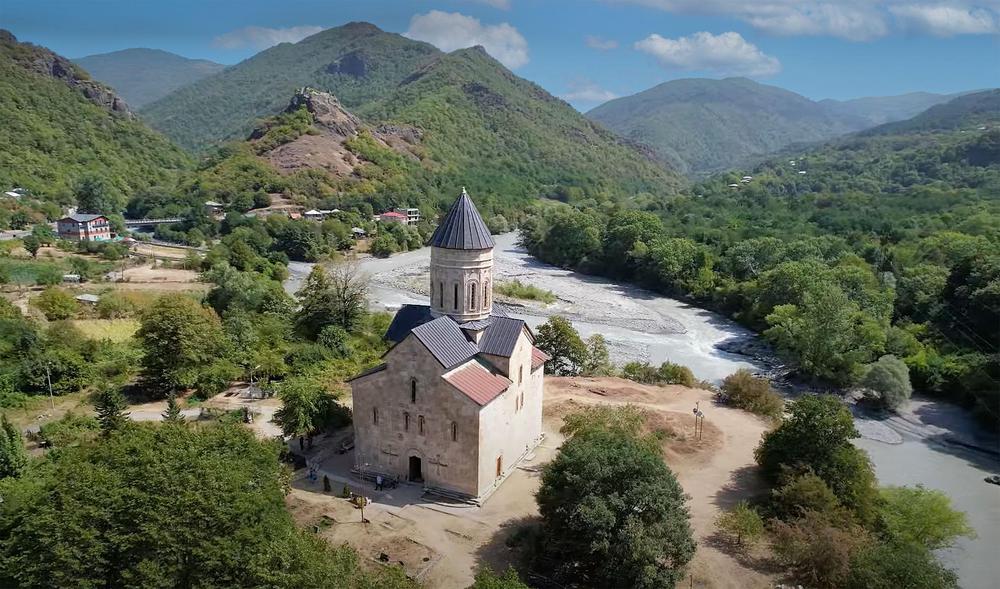Awash in the natural beauty of Georgia's Racha Region, just about 2.5 miles (or 4 kilometers) from the quaint village of Nikortsminda, the Mother of God Church, part of the Chelishi Monastery, keeps her quiet vigil in the heart of Shareula River's deep gorge. The ruins of the monastic ensemble huddle around her—a tangible echo of times long past.
Nestled beneath the shadowy silhouette of Sashevardno Mountain, Chelishi Monastery stands as a resilient testament to a bygone era. It was once a vibrant cultural beacon of Racha, its spiritual flame carried forward in countless manuscripts handed down through generations. For nearly a millennium, monks found refuge and enlightenment within its hallowed confines, their teachings shaping the cultural and religious tapestry of Racha.
Chelishi Monastery was more than a religious sanctuary—it was a vault for Georgia's cultural treasures. It harbored countless manuscripts and artifacts, many of which now grace the halls of various museums. In 1902, the canonized Archimandrite Ambrosi Khelaia made a startling discovery—a burial vault cradling the once-lost manuscript of "Moktsevai Kartlisai" ("Kartli's Conversion"), a seminal Georgian historical-hagiographical work.
The austere beauty of the monastery extends beyond its sacred grounds. Mere meters away, monk cells are etched into the rocky façade. Rumor whispers of a subterranean passage that once connected these cells to the monastery.
The monastery, born in the IX-X centuries, regained its original visage during the XVI century's second half, following meticulous repair. Constructed with pieces of lime and stones from nearby rocks, this one-nave basilica is a resilient testament to Georgia's religious heritage. Later additions, such as a bell tower, contribute to its architectural charisma.
Chelishi Monastery, located west of Nikortsminda, cradled within the Shareula River gorge, has its origins etched in historical annals from the XI century. The monastery, renowned for its storied past and the creation of the "Chelish Gospel", became a spiritual subsidiary of the diocese of Nikortsminda in 1591 and later was transferred to the Gelat Monastery in 1637.
The monastery's importance extends well beyond its architectural grandeur—it served as the custodian of many priceless Georgian manuscripts, including "Kartli’s Appeal", discovered by Ambrosi Khelaia in 1902. The educational endeavors of the monastery continued until the XX century's 1930s, leaving an indelible mark on Georgia's cultural landscape.












